
The Nematocera are a suborder of elongated flies with thin, segmented antennae and mostly aquatic larvae. Major families in the suborder include the mosquitoes, crane flies, gnats, black flies, and a group of families described as midges.
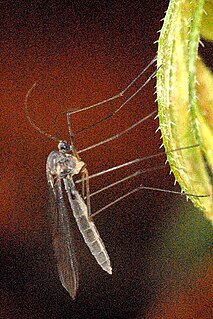
Bolitophila is the sole genus in the Bolitophilidae, a family of Diptera, with around 40 Palaearctic and about 20 Nearctic species, and three species from the Oriental region (Taiwan). They are small (6–9 mm.)

Diadocidia ferruginosa is a Palearctic species of fungus gnat in the family Mycetophilidae. They live as larvae in long dry silken tubes under bark or in rotten wood and probably feed on fungal mycelia or spores. Also associated with Peniophora.
Gnoristinae is a subfamily of fungus gnats in the family Mycetophilidae. There are about 6 genera and at least 4 described species in Gnoristinae.
Lygistorrhinidae is a family of long-beaked fungus gnats in the order Diptera. There are about 7 genera and at least 30 described species in Lygistorrhinidae.
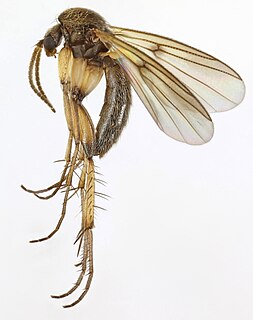
Zygomyia is a genus of fungus gnats in the family Mycetophilidae. There are at least 80 described species in Zygomyia.
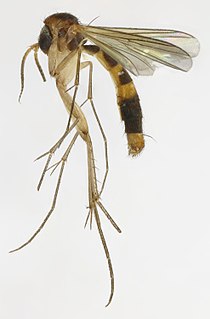
Mycetophilinae is a subfamily of fungus gnats in the family Mycetophilidae. There are more than 30 genera and 2,000 described species in Mycetophilinae.

Mycetophila is a genus of fungus gnats in the family Mycetophilidae. There are at least 740 described species in Mycetophila.

Exechia is a genus of fungus gnats in the family Mycetophilidae. There are more than 180 described species in Exechia.
Eudicrana is a genus of fungus gnats in the family Mycetophilidae. There are about 13 described species in Eudicrana.
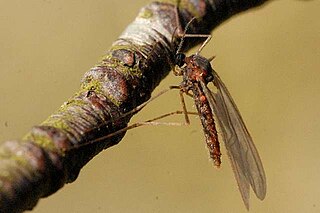
Mycomya is a genus of fungus gnats in the family Mycetophilidae. There are at least 400 described species in Mycomya.

Cordyla is a genus of fungus gnats in the family Mycetophilidae. There are at least 30 described species in Cordyla.

Neoempheria is a genus of fungus gnats in the family Mycetophilidae. There are at least 140 described species in Neoempheria.
Aglaomyia is a genus of fungus gnats in the family Mycetophilidae. There are at least two described species in Aglaomyia.
Monoclona is a genus of fungus gnats in the family Mycetophilidae. There are about 18 described species in Monoclona.

Rondaniella is a genus of fungus gnats in the family Mycetophilidae. There are about nine described species in Rondaniella.
Ectrepesthoneura laffooni is a species of fungus gnats in the family Mycetophilidae.
Gnoriste is a genus of fungus gnats in the family Mycetophilidae. There are about 13 described species in Gnoriste.

Ditomyia is a genus of fungus gnats in the family Ditomyiidae.
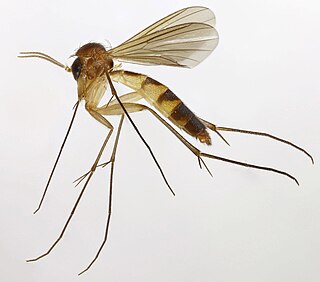
Exechiopsis is a genus of fungus gnats in the family Mycetophilidae.













